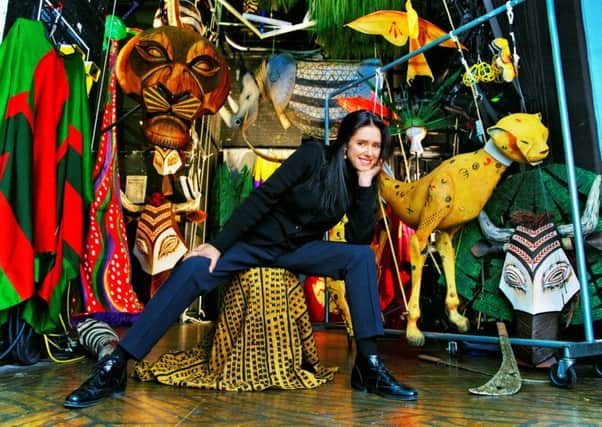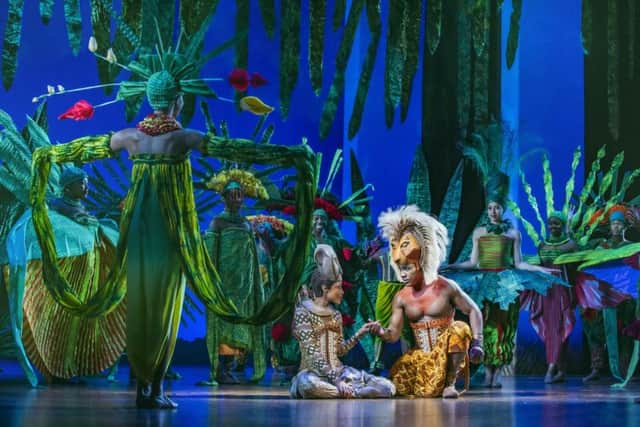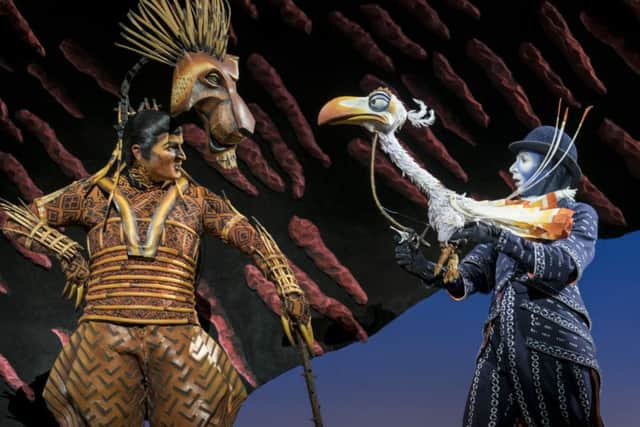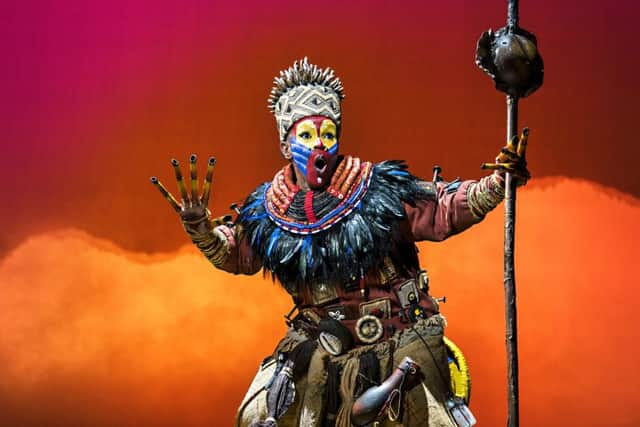Julie Taymor on bringing The Lion King to the stage: “The first big challenge was the wildebeest stampede”


As a 10-year-old child, Julie Taymor would travel into Boston from her home in the suburbs to attend drama classes. Even then, the young girl who would grow up to create one of the most successful stage musicals of all time had a thirst for discovery.
“Working with kids of different races and classes was a real eye-opener for me as a 10-year-old,” recalls Taymor. “I was out of my comfort zone and I think that’s really important, to go to places you’ve never been and take things in with fresh eyes.”
Advertisement
Hide AdThat weekly journey into the big city felt bold at the time, but it was nothing compared with the global adventures she would soon embark on. From the age of 13, Taymor began to venture further afield, extending her knowledge of theatre (“my parents were very open”). In the years that followed, she visited Europe, Latin America and the Middle East and travelled extensively around Asia. All of which fed into her career as a director and designer.


So when, in 1996, Disney was looking for somebody to take on the seemingly impossible task of transferring its animated film, The Lion King, to the stage, they knew Taymor would come up with something far more interesting than fluffy animal suits.
“Travel has been the most important thing for me,” says Taymor. “Seeing theatre in Japan and Indonesia, the Bunraku puppets, the Balinese topeng – all these forms really went into me, not from books or movies but from person to person experience. So all of that gave me a wide vocabulary of techniques from which to draw.
“I don’t believe in just picking up an entire style of theatre from a different culture and plonking it down in your own. That’s not what we did with The Lion King – technique belongs to everybody, so I was very liberal in terms of how are we going to do this? What is the best for these characters?”
Recreating a cast of animals on stage, the African savanna and a stampeding herd of wildebeest would have given most directors night terrors. But for Taymor it was an opportunity to put what she calls her “world education” on a bigger platform than ever before.


From the intricate masks to the unique “gazelle wheel” that glides across the stage, to the clever forced perspective that gives the illusion of a vast stampede, every aspect of The Lion King’s design was thought through to the tiniest detail. Taymor’s vision was so far outside the box, however, how did she convince the powers that be at Disney that it would work in a commercial musical?
Advertisement
Hide Ad“They actually completely embraced what I had to offer and supported it,” says Taymor. “Two of the producers were already familiar with the forms of theatre I wanted to use, and for the rest I made models. I did a presentation with the gazelle wheel and explained how in traditional puppet theatre you hide the mechanics and the person pushing it, you only see the gazelles going up and down.
“But in this theatre form, the art of storytelling is as important as the story itself – so we expose the mechanics and the performer, and that actually becomes part of the theme of the musical. So seeing the wheels turn fits perfectly with the song The Circle Of Life, and Mufasa’s mask is a big circle, and you see the round sun above Pride Rock.”
Advertisement
Hide AdDisney may have been easy to convince it could work, but what about Taymor herself? Adapting an animated film, where literally anything can be portrayed, for the live stage must have given her pause for thought.


“When I looked at the film, the first thing that really challenged me was the wildebeest stampede – and that’s also the thing that made me want to do it,” she says with a laugh. “Because it’s a moment of genius in the animated film, it’s musically thrilling, it’s real heart-pounding stuff. But it’s also impossible – and for me, that made it all the more fun.”
As with any successful musical, creative alchemy was crucial. Elton John, Tim Rice, Lebo M and Hans Zimmer had already made their mark with the film’s soundtrack and follow-up album, Rhythm Of The Pride Lands. They all wrote additional music and songs for the show, and the dream team was completed by a talented group of scriptwriters, co-designers and choreographers who all bought into Taymor’s vision.
The show opened on Broadway in 1997 to great acclaim, with Taymor becoming the first woman to win a Tony Award for Best Direction of a Musical. Having had a hit with the animated film, Disney was confident of a ready-made audience for the stage show. But even they could scarcely have predicted how popular it would become.
As of 2019, the musical has been seen by over 100 million people in 25 productions around the world. To what does Taymor attribute its unprecedented success, which extends well beyond the realm of musical theatre lovers?
“I think the show works on so many levels, and you don’t have to get it all or like it all to enjoy it,’ she says.
Advertisement
Hide Ad“If you hate musicals, then you can enjoy watching theatrical forms from around the world. And you might absolutely love some of the music from Rhythm Of The Pride Lands because there’s that variety.
“It’s not for one audience or one culture or one nation, it has a timeless, mythic theme that’s part of everybody’s culture. It’s a coming-of-age story and I think people relate to that in a common way all over the world. But then the theatrical forms allow experienced theatre-goers to see stuff that they actually haven’t seen on the western stage before.”
The Lion King, Edinburgh Playhouse, 5 December until 29 March